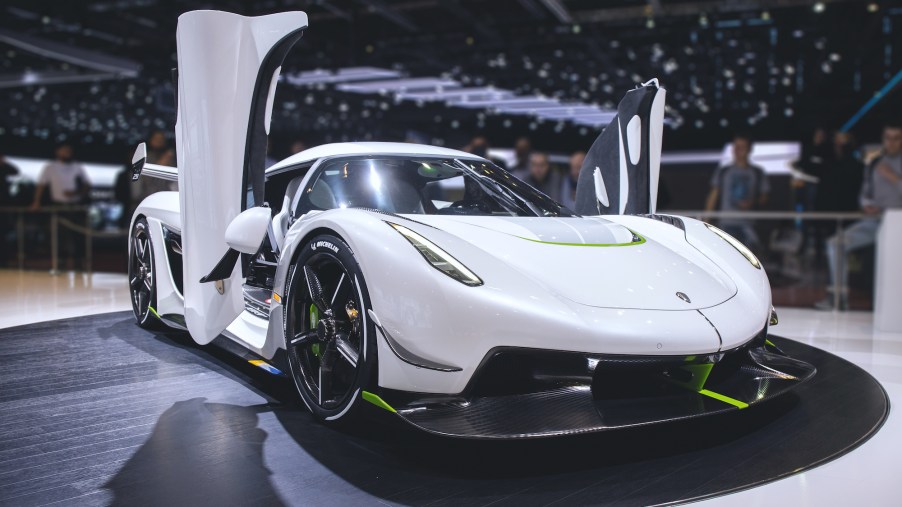
Supercar vs. Hypercar: What’s the Difference?
The terms “supercar” and “hypercar” describe vehicles capable of extreme speeds and premium performance. Plenty of sports cars on the road today offer spine-tingling power and precise handling. The 21st century has churned out some amazing vehicles, from the McLaren F1 to the Ferrari Enzo.
But with so many options, it’s hard to distinguish which class offers the best features. Here’s a quick reference to help you differentiate between a supercar and a hypercar.
The difference between a supercar and hypercar
The Oxford Dictionary defines a supercar as “a high-performance sports car.” Its first usage dates back to 1920 when a British newspaper ran an ad for the Ensign 6. In the mid-1960s, when Car magazine coined the term “supercar” for the Lamborghini Miura, it caught on and is now common terminology for a high-performance sports car.
Autoblog said, “It’s a car that’s singularly focused on performance with little regard towards other factors like accommodation or cost. It doesn’t need to be manufactured by an exotic automaker, but usually is. It similarly doesn’t need to be a two-door coupe or convertible, but tends to be.”
Typically, a supercar can top 200 mph and hit 0 to 60 mph in under four seconds. But because a hypercar must meet similar criteria, how do you tell the difference between the two?
Autoblog explains that “automobile journalists make the distinction by saying that the crème de la crème in a manufacturer’s line-up can be considered hypercars. These models usually boast the latest technology, the most insane speeds, the most exotic looks, and are the most expensive cars in the manufacturer’s range.”
How to tell the two types apart
The most important aspects of a high-end sports car are cost, design features, performance capabilities, and authenticity.
New York magazine says a supercar must have “eye-watering specs and tech, commonly distilled to horsepower north of 500 and a blistering 0-60 time. For price, cars less than six figures need not apply. Aesthetically, it must be worthy of a magazine centerfold or wall poster, so stunning no one judges you for staring endlessly. Lastly, a supercar has to be hard to obtain.”
The magazine defines a hypercar thus: “Very few supercars are hypercars, but all hypercars are indeed supercars.” Hypercars are rare with low-volume production runs, typically less than 1,000 units. It’s not unusual for these vehicles to carry a seven-figure sticker price while offering “insane performance specs.” New York mag explains, “It also has to ratchet the technology up to an obscene level and be staggeringly beautiful. It’s a high bar, but a few cars have sailed over.”
The most impressive supercar and hypercar models
The Porsche 918 is an exemplary example of a hybrid supercar. With only 918 models made and a starting price of $845,000, the vehicle puts out 874 hp. New York magazine says, “It’s lusted after the world over and is considered one of the pinnacles of automotive engineering.”
Another stunning supercar is the exclusive 700-hp V12 Lamborghini Aventador SuperVeloce, carrying a hefty $500,000 price tag. Robb Report says the Porsche Carrera GT, Mercedes-Benz SLR McLaren, and Saleen S7 are all great examples of today’s best supercars.
A classic hypercar is the Pagani Huayra, generating 730 hp from its mid-mounted Mercedes V12 turbo engine. This vehicle can be yours for a mere $1.2 million. A Bugatti Veyron Super Sport, capable of 1,200 hp, also falls into the hypercar category, as does the million-dollar McLaren P1.
Recently, the term “megacar” has caught on to describe custom-built Koenigsegg models. They produce up to 1,500 hp and carry a whopping $4.1 million sticker price. As the limits appear endless, no matter which category a sports car falls under, it’s staggering to see performance capabilities continue to impress beyond our wildest dreams.


